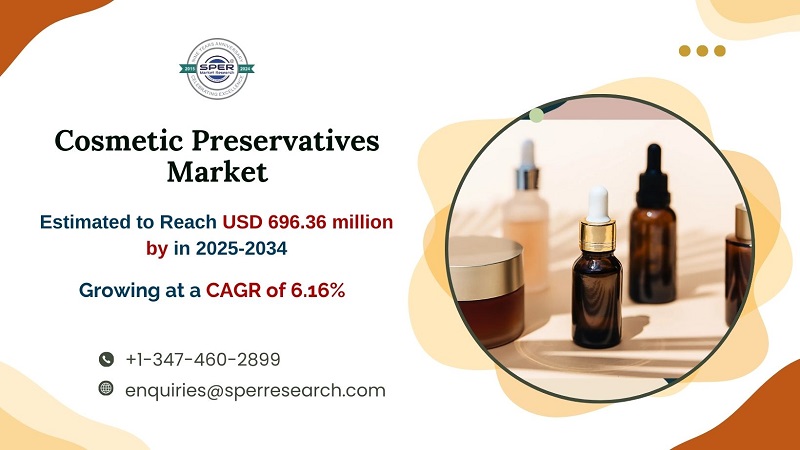Cosmetic preservatives are crucial additives used to inhibit microbial growth, extend shelf life, and ensure the safety of beauty and personal care products. They help maintain product stability in creams, lotions, shampoos, and makeup by preventing contamination from bacteria, mold, and yeast. With the growing demand for high-quality and long-lasting cosmetics, preservatives play a vital role in product formulation. However, concerns over synthetic preservatives like parabens and formaldehyde have led to increased consumer demand for natural and eco-friendly alternatives. As a result, the market is evolving with innovations in plant-based and multifunctional preservative systems that balance effectiveness with consumer safety and regulatory compliance.
According to SPER Market Research, ‘Cosmetic Preservatives Market Size – By Product, By Application – Regional Outlook, Competitive Strategies and Segment Forecast to 2034’ state that the Cosmetic Preservatives Market is predicted to reach 696.36 million by 2034 with a CAGR of 6.16%.
Drivers: The market for cosmetic preservatives is expanding as a result of growing consumer awareness of product safety and hygiene, which fuels demand for personal care products with efficient microbiological protection. The use of preservatives has been further stimulated by the beauty and cosmetics industry’s explosive growth worldwide, particularly in emerging economies. Additionally, manufacturers are investigating plant-based and bio-based preservatives that are in line with clean-label and sustainability trends as a result of the trend toward natural and organic cosmetics. The market is expanding due to advancements in preservative technologies, such as multipurpose compounds that provide skin benefits and preservation. The creation of creative and legal preservation solutions is further encouraged by rising regulatory criteria for cosmetic safety.
Restraints: The market for cosmetic preservatives has a number of obstacles in spite of its expansion. Tight laws prohibiting the use of artificial preservatives like formaldehyde, phenoxyethanol, and parabens have prompted initiatives at reformulation and further investigation into substitute substances. Product formulation is further complicated by consumer worries about possible allergic responses and skin sensitivities from specific preservatives. Furthermore, it is still difficult to determine how effective natural preservatives are because they could not offer the same wide-spectrum protection as synthetic alternatives. In order to maintain product stability and shelf life, manufacturers are also under pressure to create innovative preservation methods including airless packaging and antibacterial plant extracts due to the growing demand for formulations that include little or no preservative.
Request a Free Sample Report: https://www.sperresearch.com/report-store/cosmetic-preservatives-market?sample=1
The Global Cosmetic Preservatives Market is dominated by North America. This is attributed to its well-established cosmetic industry and high consumer spending on personal care products. The presence of major cosmetic manufacturers and a robust supply chain infrastructure further bolster the market. Some of its key players are – Arkema, Ashland, BASF SE, Brenntag SE, CHEMIPOL S.A.
Cosmetic Preservatives Market Segmentation:
By Product: Based on the Product, Global Cosmetic Preservatives Market is segmented as; Paraben Esters, Formaldehyde Donors, Phenol Derivatives, Alcohols, Quaternary Compounds, Organic Acids and Others.
By Application: Based on the Application, Global Cosmetic Preservatives Market is segmented as; Skin & Sun Care, Hair Care, Toiletries, Fragrances & Perfumes, Makeup & Color and Others.
For More Information, refer to below link: –
Cosmetic Preservatives Market Forecast
Related Reports:
Follow Us –
LinkedIn | Instagram | Facebook | Twitter
Contact Us:
enquiries@sperresearch.com
+1–347–460–2899



